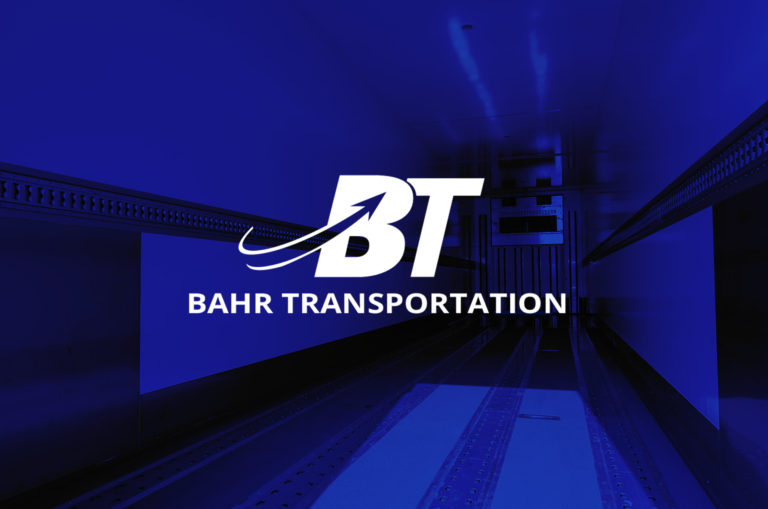Key Takeaways
- Key Factors for Rates: Freight rates depend on multiple facets – i.e. weight of freight, distance, transportation mode, and market conditions.
- TMS Software Benefits: TMS software ensures accurate rates, improves efficiency, and reduces costs through automation and data analysis.
- Broker Expertise and Transparency: Expertise in market trends and transparent communication help brokers secure competitive rates and build customer trust.
In the world of logistics and transportation, understanding how to calculate rates as a freight broker is crucial to optimizing shipping operations.
But more importantly, knowing how to do this effectively can significantly impact your customers’ satisfaction and loyalty. Your ability to provide accurate, competitive rates ensures that your clients can plan their budgets confidently, avoid unexpected costs, and trust in your reliability.
This article will guide you through the key factors that influence freight rates and how you can leverage this knowledge to better serve your customers and enhance their overall experience with your brokerage.
Understanding the Basics of Rates for Freight Brokers
Freight rates are influenced by a variety of factors.
These include the type of goods being shipped, the distance between the pickup and delivery points, the mode of transportation, and current market conditions. Freight brokers must use their expertise and industry knowledge to analyze these factors and provide competitive rates.
Key Factors Influencing Freight Rates
- Type of Freight:
- Weight and Dimensions: Heavier and bulkier shipments cost more to transport. Freight brokers assess the weight and dimensions to determine if the load requires special handling or equipment.
- Freight Class: This classification system, primarily used in Less Than Truckload shipping, categorizes goods based on their density, stowability, handling, and liability. Different classes have different rates.
- Distance and Location:
- Mileage: The farther the distance, the higher the cost. Freight brokers calculate the total mileage to provide an accurate quote.
- Geographic Location: Shipping to or from remote areas can be more expensive due to limited carrier availability and increased fuel costs.
- Mode of Transportation:
- Truckload (TL) vs. Less Than Truckload (LTL): Full truckload shipments generally have a lower cost per unit compared to LTL shipments, where the truck is shared with other shippers.
- Special Requirements: Temperature-controlled, hazardous materials, or oversized loads require specialized equipment and handling, influencing the rate.
- Market Conditions:
- Supply and Demand: During peak seasons or in high-demand areas, rates can surge due to limited carrier availability.
- Fuel Prices: Fluctuations in fuel prices directly impact transportation costs. Brokers factor in current fuel surcharges when calculating rates.
- Additional Services:
- Accessorial Charges: Services such as liftgate delivery, residential pickup/delivery, inside delivery, and detention fees can add to the total cost.
What is Per Mile Freight Rate?
A per mile freight rate is a cost calculation method where the total shipping cost is determined based on the distance traveled per mile.
For a 500-mile journey that costs $1,300 for the journey, the freight rate would be $2.60 per mile (1,300/500).
As a freight broker, using this method and rate calculation allows you to provide transparent and predictable pricing for your customers.
To calculate the per mile rate, you factor in the total distances in miles between the pickup and delivery locations, taking into account the type of cargo, the mode of transportation, and any additional services required. This calculation helps distinguish between linehaul rates, which cover the basic transportation costs, and fuel-inclusive rates, which include fuel surcharges. By understanding these distinctions, freight brokers can better manage and calculate their own rates.
Real World Example of Rate Calculation
A shipper needs to transport 20,000 pounds of goods from Atlanta, GA, to Chicago, IL.
The broker contacts the shipper and determines a market rate of $2.50 per mile for the 700-mile trip, leading to an initial rate of $1,750.
- Broker and Shipper Negotiation:
- The shipper agrees to pay $1,750 for the transportation.
- Broker and Carrier Negotiation:
- The broker contacts several carriers and finds one willing to haul the load for $1.80 per mile.
- The carrier agrees to transport the goods for $1,260 ($1.80 x 700 miles).
- Final Agreement:
- The carrier transports the goods and is paid $1,260.
- The broker retains a fee of $490 ($1,750 – $1,260).
The Role of TMS Software and How It Can Help
Transportation Management System (TMS) software is a powerful tool for freight brokers as they play a pivotal role in helping freight brokers calculate rates more accurately and efficiently.
Here’s how a TMS software can benefit your shipping operations, rates, and pricing:
- Enhanced Rate Accuracy for Precise Calculation: A TMS ensures precise rate calculations by integrating real-time data from various rating intelligence providers compared against your historical lane data, reducing the risk of errors, and ensuring you offer competitive pricing to your clients.
- Improved Operational Efficiency for Better Margins: By automating routine tasks such as load planning, shipment tracking, and documentation, TMS software frees up your time to focus on strategic activities that encourage better margins.
- Cost Savings from Optimized Shipping: A TMS helps identify the most cost-effective modes and carriers, optimizing your shipping processes and reducing overall transportation costs. This means you can pass on the savings to your customers or reinvest in your business.
- Scalability to Match Business Growth: As your business grows, a TMS can scale with you, accommodating increased shipment volumes without compromising on performance. This flexibility ensures that your operations remain smooth and efficient, regardless of size.
- Data-Driven Insights for Better Analysis: TMS software provides valuable analytics and reporting tools that help you make informed decisions. By analyzing trends and performance metrics, you can continuously improve your operations and better meet customer needs.
- Historical Data as a Guideline: Leveraging historical data within a TMS allows you to identify patterns and trends from past shipments. This information can serve as a guideline for future rate calculations and operational decisions, ensuring that you are always basing your strategies on solid, proven data.
- Various Sources to Make the Best Decision: A TMS integrates data from various sources, including real-time market rates, carrier performance metrics, and customer demand trends. By consolidating this information into one platform, you can make more informed and strategic decisions, optimizing your logistics operations for efficiency and cost-effectiveness.
By implementing a TMS, you not only streamline your operations but also enhance the overall customer experience, positioning your business for sustained growth and success.
Your Role as a Freight Broker
As a freight broker, when it comes to rates, your market expertise is invaluable. It allows you to stay attuned to current trends, carrier capacities, and rate fluctuations, which helps secure the most competitive rates for your clients.
Also key, is having access to a vast network of reliable carriers, which is where you can find the best transportation options tailored to your clients’ specific needs, ensuring timely and cost-effective delivery. By working closely with your customers to understand their unique requirements, you provide customized solutions, whether they need expedited shipping, specialized equipment, or consistent lanes.
And by prioritizing transparency, you offer clear explanations of rate calculations and keep your clients informed throughout the shipping process. This open communication builds trust and ensures smooth, efficient operations, ultimately enhancing customer satisfaction and loyalty.
Four TMS integrated providers for rate market intelligence
In today’s competitive logistics landscape, having access to accurate and up-to-date rate market intelligence is crucial for effective decision-making. Transportation Management Systems (TMS) integrate with various providers to offer comprehensive insights into freight rates, trends, and market dynamics.
Here are four key TMS integrated providers for rate market intelligence:
DAT Freight & Analytics
DAT provides a wealth of data and analytics tools to help shippers and carriers make informed decisions. With its extensive database of freight rates and market trends, DAT offers unparalleled visibility into the market.
Features:
- Real-time spot and contract rate data
- Historical rate trends and forecasting
- Load-to-truck ratios for capacity insights
- Comprehensive market analytics and reporting tools
FreightWaves SONAR
Overview: FreightWaves SONAR is a market intelligence platform that delivers real-time data and insights for the freight industry. It leverages a wide range of data sources to provide a holistic view of market conditions.
Features:
- Real-time freight market data and analytics
- Predictive modeling and forecasting tools
- Market sentiment analysis
- Detailed reports on capacity, demand, and rate fluctuations
Greenscreens.AI
Greenscreens.AI utilizes advanced artificial intelligence to provide dynamic pricing and rate forecasting for the freight market. It helps shippers and carriers optimize their pricing strategies.
Features:
- AI-driven dynamic pricing models
- Real-time rate predictions and adjustments
- Integration with TMS for seamless data flow
- Enhanced decision-making tools with predictive analytics
Truckstop
Truckstop is a leading provider of freight matching and load board solutions, offering extensive rate data and market insights. It supports carriers and shippers in finding the best rates and optimizing their operations.
Features:
- Comprehensive load board with real-time rate data
- Historical rate analysis and trend forecasting
- Tools for managing and optimizing freight bids
- Integration with TMS for streamlined operations and data management
These TMS integrated providers offer essential tools and data to help logistics professionals stay competitive and make data-driven decisions in an ever-changing market.
Conclusion
Freight brokers play a critical role in the logistics industry, bridging the gap between shippers and carriers.
With the right tools, navigating the complexities of freight rates becomes a seamless experience, allowing you to focus on providing exceptional service and running your business efficiently.
To further enhance your operations and exceed customer expectations, consider integrating Descartes Aljex TMS into your business. A cloud-based Transportation Management System (TMS) can provide precise rate calculations, improve operational efficiency, and offer valuable data-driven insights.
With Descartes Aljex TMS, you can streamline your processes, reduce costs, and scale your business effortlessly, all while maintaining the highest standards of service.
Schedule a demo with a team member today.


